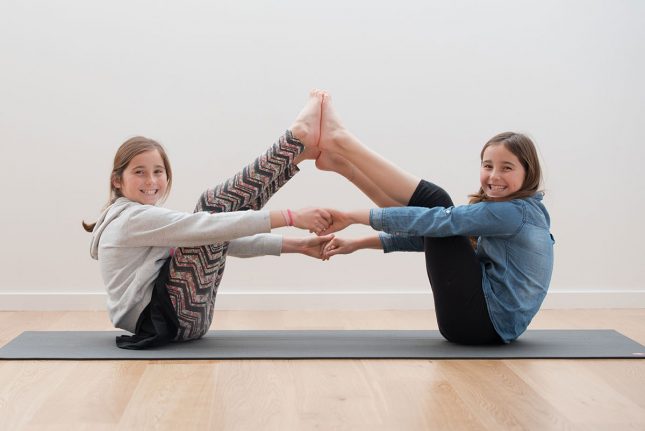Mindfulness and meditation has in recent years gained popularity; so much so that a school in the US replaced detention, with a mindfulness meditation programme; they’ve had remarkable results, including no expulsions since implementing the programme.
These results are inspiring other schools to follow suit, as with rising rates of autism, ADHD, learning difficulties, and anxiety there’s a need for tools to help children calm down and relax.
By teaching children these skills, we help them face and work through their emotions more effectively; making them more conscious of their actions and aware of why they react a particular way, as opposed to just punishing them for misbehaving.
It’s invaluable for a child to recognise what they’re feeling, whether it be anxious, happy, aggressive, or sad. These are things we all feel at different times, but it’s how we respond (and what we learn about ourselves through our response) that’s more important.
Yoga and meditation
Yoga and meditation bring children more awareness of their body, mind, emotions, and breath. This helps build their emotional intelligence, which is just as important as learning how to read, write, and calculate.
A child is less likely to behave unreasonably if they take a moment to recognise what it is they’re feeling. This gives them the chance to review and possibly change their reaction. The self-awareness gained through meditation invokes children to approach situations more consciously as well as more logically.
One of the most effective things about meditation is that the breathing techniques help allow the body and mind to be at ease. Teaching children to use these skills, particularly during times of stress, sets them up for life. These tools will be an anchor for them to return to at any point in time, whatever the situation. And we all know just how stressful life can get…
I’ve seen first-hand the effects yoga and meditation have on a child’s development. Yoga helps with muscular development as well as balance, and coordination skills. Meditation and breathing exercises help children self-regulate their behaviour and emotions, which is vital to their well-being. Both of these skills help children learn to navigate new experiences and deal with daily issues more effectively.
Here’s some breathing techniques you can practice at home with your children to give them the tools to build emotional balance for a calm mind. These are great for any child aged 4-12 years old.
3 breathing techniques for teaching children mindfulness
Slowing down the breathing.
Ask your child to breath normally while counting the number of breaths they take as you time for 1 minute. Then ask your child to slow down their breath and count the number of breaths again in 1 minute. Compare the difference between normal breathing and slow breathing. Ask your child how they feel after practicing the slow breathing.
Breathing away worries and negativity from the mind.
Sit comfortably in a cross-legged position, spine tall. Place your hands together so the little finger sides of the hands are touching and the hands are in a little bowl shape. Take a long, slow, deep breath through the nose and then breath out through the mouth. When you breathe out through the mouth try to direct the breath into the bowl of the hands. You might need to readjust the position of your hands so you can feel the wind of the breath.
Once you’ve got the breath established start to think about all the items that are worrying you, making you feel upset, or that you want to let go off, and as you breath out release these thoughts and problems into your hands. Continue this breath for 2-3 minutes or use counting 10 – 26 rounds of the breath.
Sa Ta Na Ma Meditation to reprogram mind.
This meditation involves singing the sounds, Saa Taa Naa Maa along with repetitive finger movements, or mudras. It’s been shown to reduce stress levels and increase activity in areas of the brain that are central to memory.
Repeat the Saa Taa Naa Maa sounds (or mantra) while sitting with your spine straight.
On Saa, touch the index fingers of each hand to your thumbs.
On Taa, touch your middle fingers to your thumbs.
On Naa, touch your ring fingers to your thumbs.
On Maa, touch your little fingers to your thumbs.






